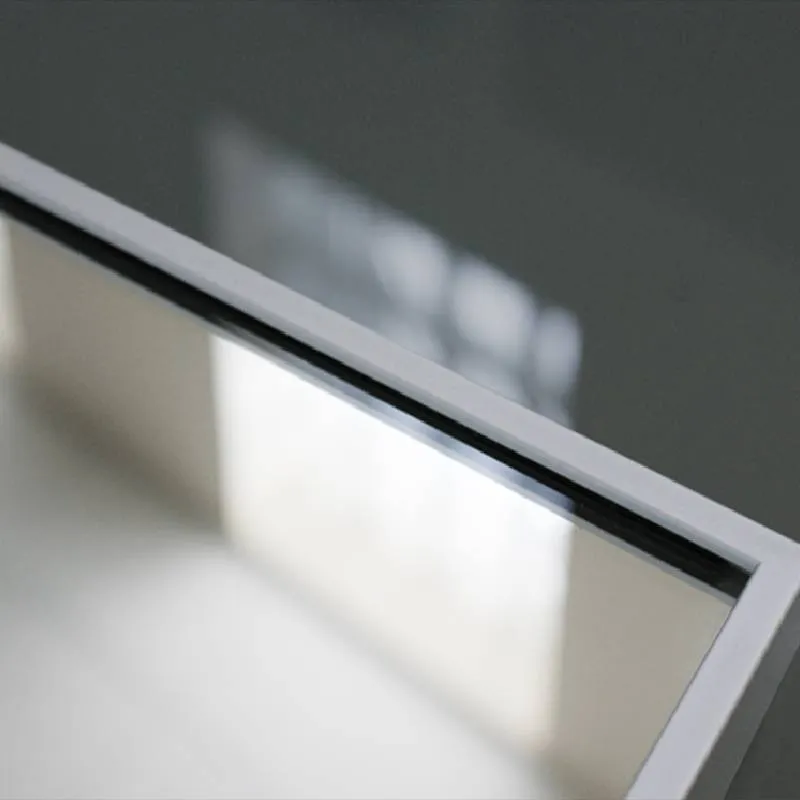

Types of Mirror Glass
Mirror glass is a versatile material extensively used in various applications, from home décor to automotive and technical purposes. Understanding the different types of mirror glass can help individuals make informed decisions when selecting the appropriate type for their specific requirements. Here, we explore the various types of mirror glass, their characteristics, and their typical uses.
1. Plain Mirror Glass
Plain mirror glass is the most common type, manufactured by applying a reflective metallic coating—typically a thin layer of silver or aluminum—on one side of a glass sheet. This type of mirror offers excellent clarity, reflecting approximately 90-95% of light. It is widely used in bathrooms, dressing rooms, and for decorative purposes in homes and offices. The surface can be finished to different grades, creating various visual effects depending on the use.
2. Tinted Mirror Glass
Tinted mirror glass incorporates a color tint into the glass during the manufacturing process, resulting in a mirror that provides both a reflective surface and tint. This type of glass can reduce glare and solar heat gain, making it particularly useful for commercial windows and buildings. Tinted mirrors are often seen in office buildings and modern homes as they offer more privacy while maintaining an aesthetic appeal.
3
. Two-Way Mirror GlassTwo-way mirror glass, also known as one-way mirror glass, is designed to allow some light to pass through while reflecting other light. One side appears as a regular mirror, while the opposite side is transparent. This type of mirror is commonly used in security applications, such as in interrogation rooms, as well as in observation settings where discretion is required. It is important to have proper lighting on either side of the mirror to achieve the desired effect—while one side needs to be well-lit, the other must be dark.
4. Polished Edge Mirror Glass

Polished edge mirror glass is characterized by having its edges finely polished to prevent chipping and create a finished appearance. This type of glass is often used in high-end applications, such as custom furniture, art displays, and architectural installations. The polished edges not only enhance durability but also contribute to the aesthetic appeal of the design.
5. Antique Mirror Glass
Antique mirror glass is a decorative product that mimics the aged appearance of vintage mirrors. It is often produced by applying treatments that create a cloudy, distressed look, giving it a unique character. Antique mirrors are popular in rustic and traditional interiors, offering a sense of warmth and nostalgia. Typically, these mirrors are used in furnishings, lighting designs, and gallery walls.
6. Mirrored Acrylic
While not technically glass, mirrored acrylic is an alternative that resembles traditional glass mirrors but is lighter and shatter-resistant. Mirrored acrylic is often used in environments where weight is a concern, such as in children's play areas or in mobile displays. Due to its versatility, it can also be easily shaped and installed in various applications, including crafts and signage.
7. Smart Mirror Glass
Smart mirror glass, or digital mirror glass, integrates technology into mirror surfaces, enabling features such as LED displays, touch control, and connectivity to apps and devices. This innovative type of mirror can provide information such as weather, news updates, and even serve as a platform for video calls. Smart mirrors are becoming increasingly popular in modern homes and high-tech retail environments.
Conclusion
Choosing the right type of mirror glass depends on the specific application and desired aesthetic. Whether you need a functional piece for your bathroom, a stylish addition to your home décor, or a high-tech smart mirror for convenience, understanding the various types can help streamline your decision-making process. As technology and design continue to advance, mirror glass will likely evolve even further, offering new solutions and applications in our everyday lives.